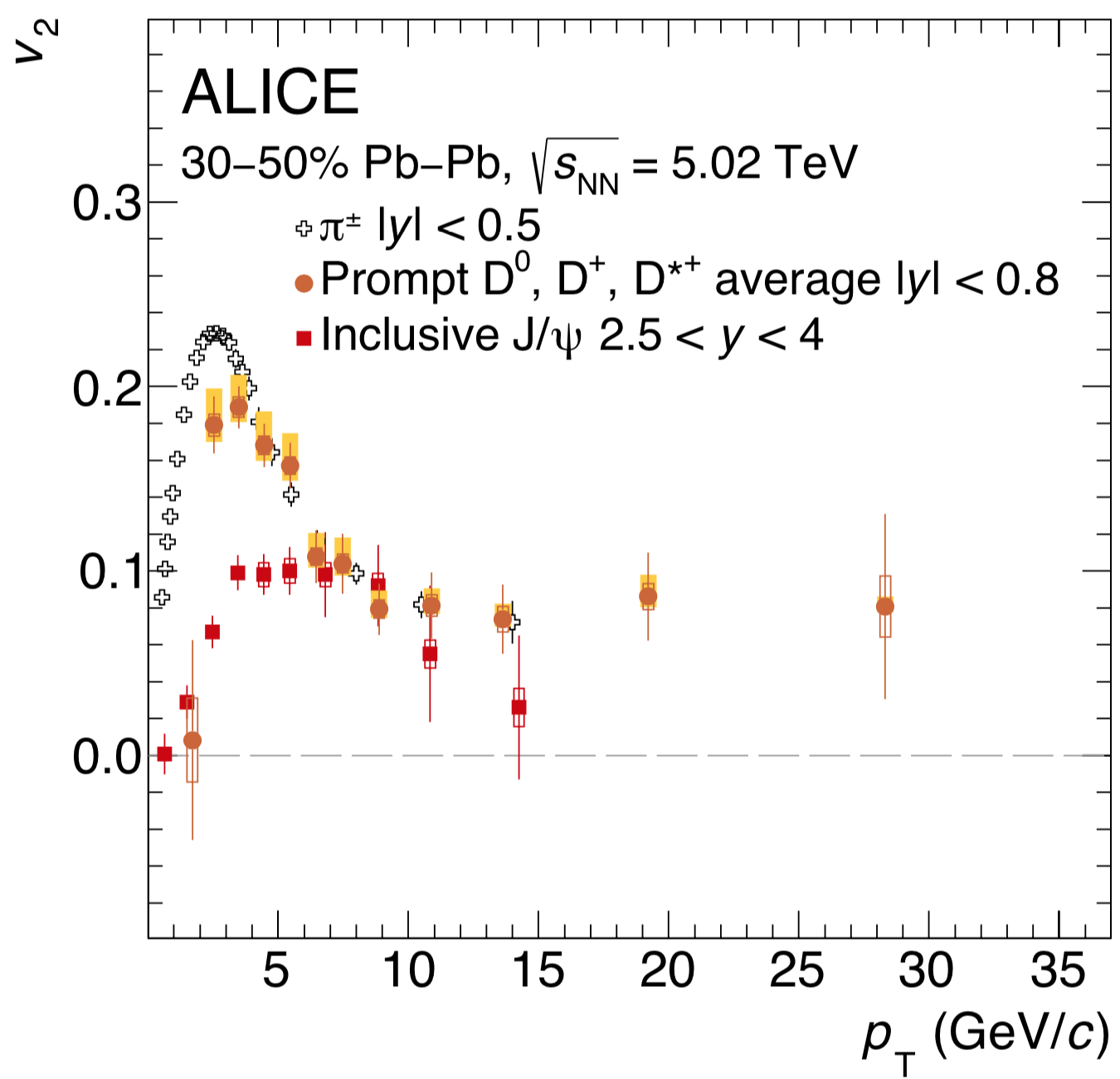
ALICE studies the quark-gluon plasma expansion with charm quarks
Charm quarks serve as probes of the quark-gluon plasma (QGP) formed when lead nuclei collide in the LHC. When lead nuclei do not collide head on, the QGP system is elongated and the expansion leads to a dominant elliptical modulation - elliptic flow v2 - in the momentum distribution of hadrons.
The ALICE Collaboration recently measured, using the large lead-lead sample collected in 2018, the elliptic flow of hadrons containing charm quarks, either bound to a light quark (D meson) or in charm-anticharm pairs (J/ψ). The results are shown in the figure as a function of transverse momentum pT. At low momentum, the elliptic flow of D mesons is not as large as that of pions (that contain only light quarks), while the elliptic flow of J/ψ is lower than both, but distinctly observed. This pattern indicates that the heavy charm quarks are dragged with the QGP expansion, but likely to a lesser extent than light quarks, and that both D mesons and J/ψ at low momentum are in part formed by the binding (recombination) of flowing quarks.
The INFN groups played a central role for achievement of these results.
CERN Media Update:
https://home.cern/news/news/physics/cern-collaborations-present-new-results-particles-charm-quarks
Further reading:
D meson anisotropy in Pb-Pb collisions:
https://arxiv.org/pdf/2005.11131.pdf
J/ψ meson anisotropy in Pb-Pb collisions: